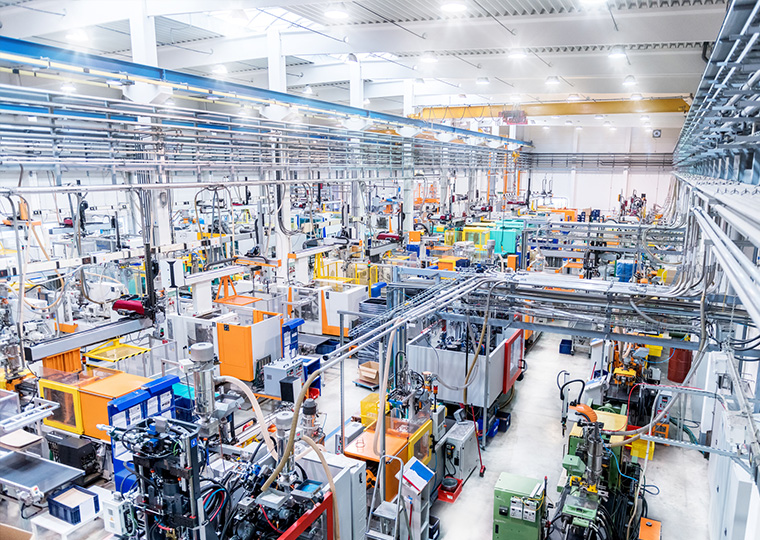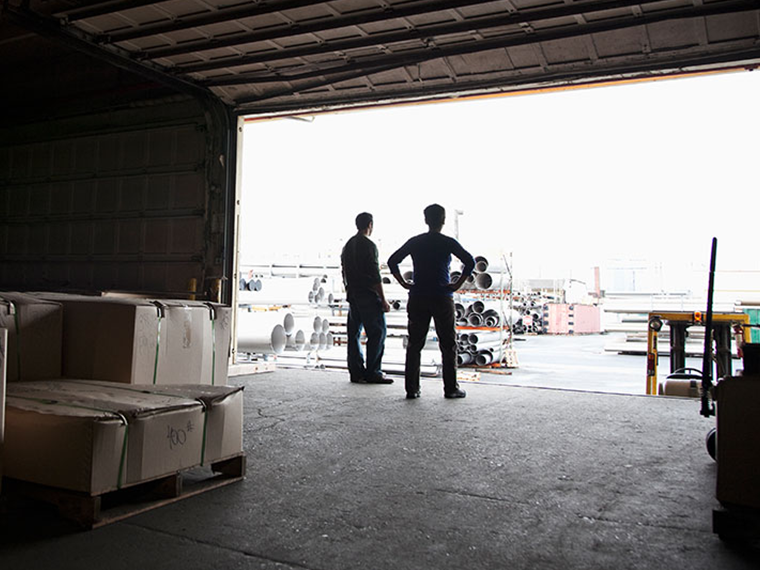Enormous growth and a redrawn supply chain required a new system
In some of the most striking images of the COVID-19 pandemic, long lines of cars queued up at food distribution centers to collect a few days of groceries. As millions lost their jobs and struggled to pay bills, food banks were suddenly overwhelmed by people needing assistance. Demand for food boxes at one Virginia center soared 225% over pre-pandemic levels.
There also was trouble at the other end of the food supply chain. Produce rotted or went unplanted for a lack of field workers, and the coronavirus shut down some meat processing plants. With the closing of restaurants, schools and hotels, sales at food-distribution companies plunged by 60% to 90%.
In response to the crisis, the U.S. Department of Agriculture introduced the Farmers to Families Food Box, a $6 billion program that paid producers and distributors to package fresh produce, dairy or meat into family-sized boxes and deliver them to needy organizations. While the program was a boon for families and producers (who also received $16 billion in direct aid), it meant an added burden for food banks, which were already stretched to the limit and lacked the storage, trucks and manpower to handle the food themselves.
Opt In to the Review Monthly Email Update.
Ultimately, the USDA made food banks “virtual intermediaries,” using their contacts to coordinate distribution of the boxes from suppliers to school lunch programs, homeless shelters, soup kitchens and other local agencies.
Organizing deliveries to hundreds of agencies presented a massive logistical problem. To help the Los Angeles Regional Food Bank, a team from Salesforce.com, the food bank and UCLA Anderson came together to develop and deploy software, called a decision support system, to manage the process.
The system needed to be “simple, easily understood and immediately usable,” the team wrote in a paper published in Production and Operations Management.
Decision support systems, or DSS, use mathematical models to analyze large amounts of information and present it in a way that’s useful to planners. In this case, the system enabled food bank managers to allocate deliveries based on the availability of supplies and the needs of the agencies, while executives could use the system to generate weekly reports for the USDA.
“Without this DSS, it would have been impossible for the LARFB to coordinate the food distribution for the box program as the volume continued to grow,” the authors write.
Even before the pandemic, food insecurity was widespread in Los Angeles County. Two million people required food assistance in 2019 and more than two-thirds of students depended on free or reduced-price school meals. In that year, LAFRB distributed 82 million pounds of food to more than 600 agencies in 1,000 locations, serving low-income families, children, the elderly and the homeless.
Like food banks around the country, LARFB’s operations in the pandemic were swamped by those needing food assistance and by other problems. The organization had to come up with new delivery methods, such as prepackaged food boxes, adopt new safety measures for its workers, and improvise temporary distribution centers at schools and other sites.
However, LARFB’s existing computer system for managing its operations wasn’t practical for handling the temporary box program, the authors write. But as the program expanded, it became clear that some system was needed, and quickly.
After UCLA Anderson’s Christopher Tang was quoted in a Los Angeles Times story about waste in the food supply chain, a Salesforce executive got in touch and the two connected with officials at the food bank. The project team included Salesforce’s Lester Blackmon, Ross Chan, Geeta Chintapally, Sandip Dhara, Aditi Jagdish, Srini Konakalla, Jasbir Labana and Jason Stone; the food bank’s Omar Cabral, Peter Felix, Jeff McIlvain, Jason Torres and Weldon Wu; and UCLA Anderson’s Tang. Within 45 days, they had developed and deployed an IT system to coordinate food box deliveries, putting it into operation by early July 2020.
The system makes allocation decisions weekly, based on the total amount of produce, dairy or meat each supplier or distributor is contracted to provide and on the size of the orders placed by the various agencies. It also takes into account the days the supplier makes deliveries, the type of truck it uses and the size of delivery vehicle the receiving agency can accommodate. Then it recommends how best to apportion available supplies to requesting agencies.
For example, Los Angeles-based Don Lee Farms, a distributor in the program, provides 20-pound food boxes with either cheese, precooked pork or precooked chicken. In a particular week, the DSS shows that Don Lee has 5,120 cases of cheese to be allocated, along with the requests for cheese placed by several agencies. The optimal allocation it recommends would be to send 1,540 cases to Baldwin Park Unified School District and 3,580 to Food Net, a local food distribution center.
Over the eight weeks between July 6 and August 30, LARFB used the DSS to coordinate distribution for between six and 14 suppliers and 125 to 215 agencies. Since August, the food bank has handled an average of 150,000 food boxes a week through the federal program, in addition to its regular workload.
The USDA planned to wrap up the box program at the end of May 2021. While the DSS was a one-off project to deal with the COVID-19 emergency, it did give the food bank a method to consistently capture detailed data about how its distributors and participating agencies operate. It is working on a new initiative “to promote data-driven decision-making,” the authors write.
Featured Faculty
-
Christopher Tang
UCLA Distinguished Professor; Edward W. Carter Chair in Business Administration; Senior Associate Dean, Global Initiatives; Faculty Director, Center for Global Management
About the Research
Blackmon, L., et. al. (2021). Rapid Development of a Decision Support System to Alleviate Food Insecurity at the Los Angeles Regional Food Bank amid the COVID‐19 Pandemic. Production and Operations Management. https://doi.org/10.1111/poms.13365






